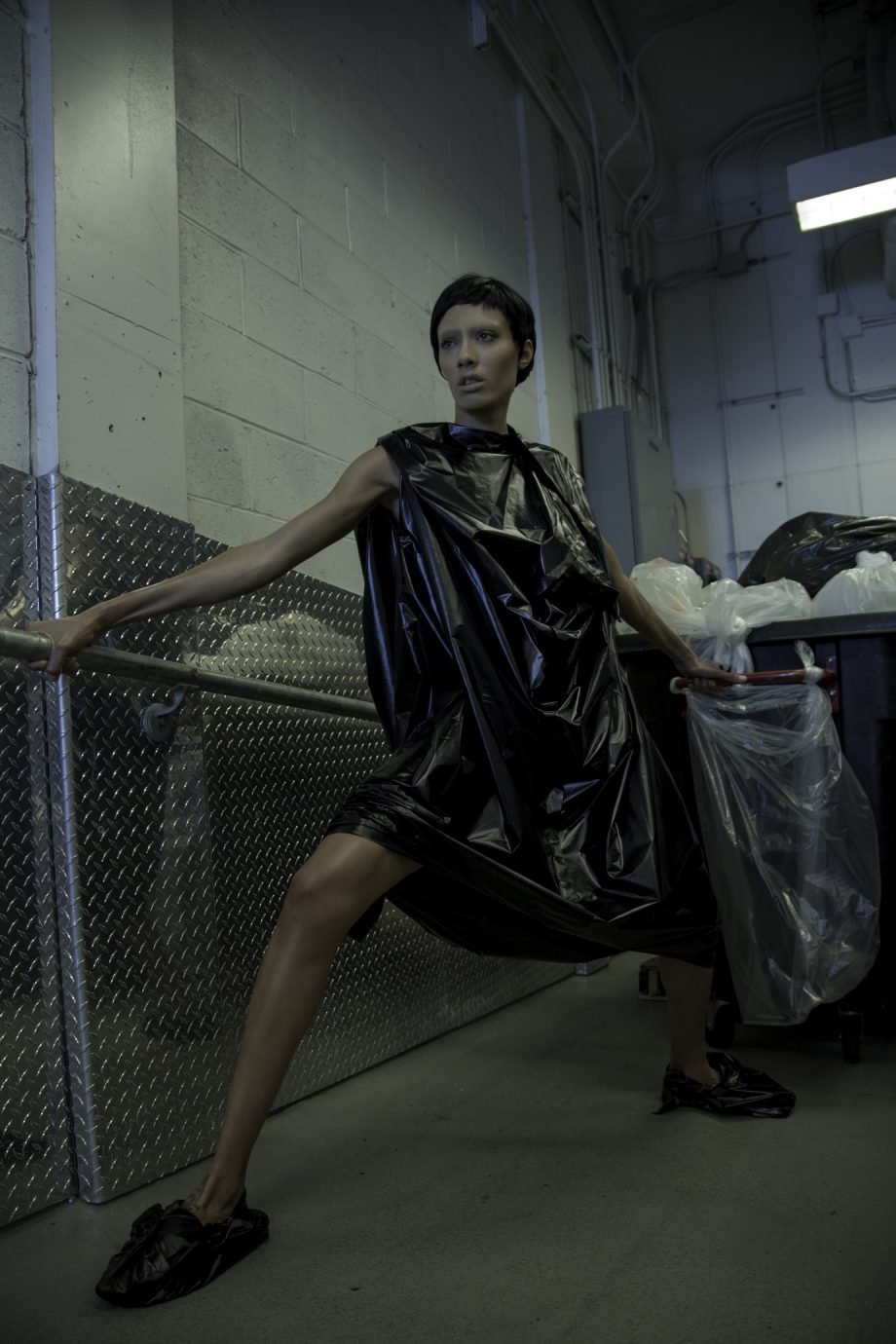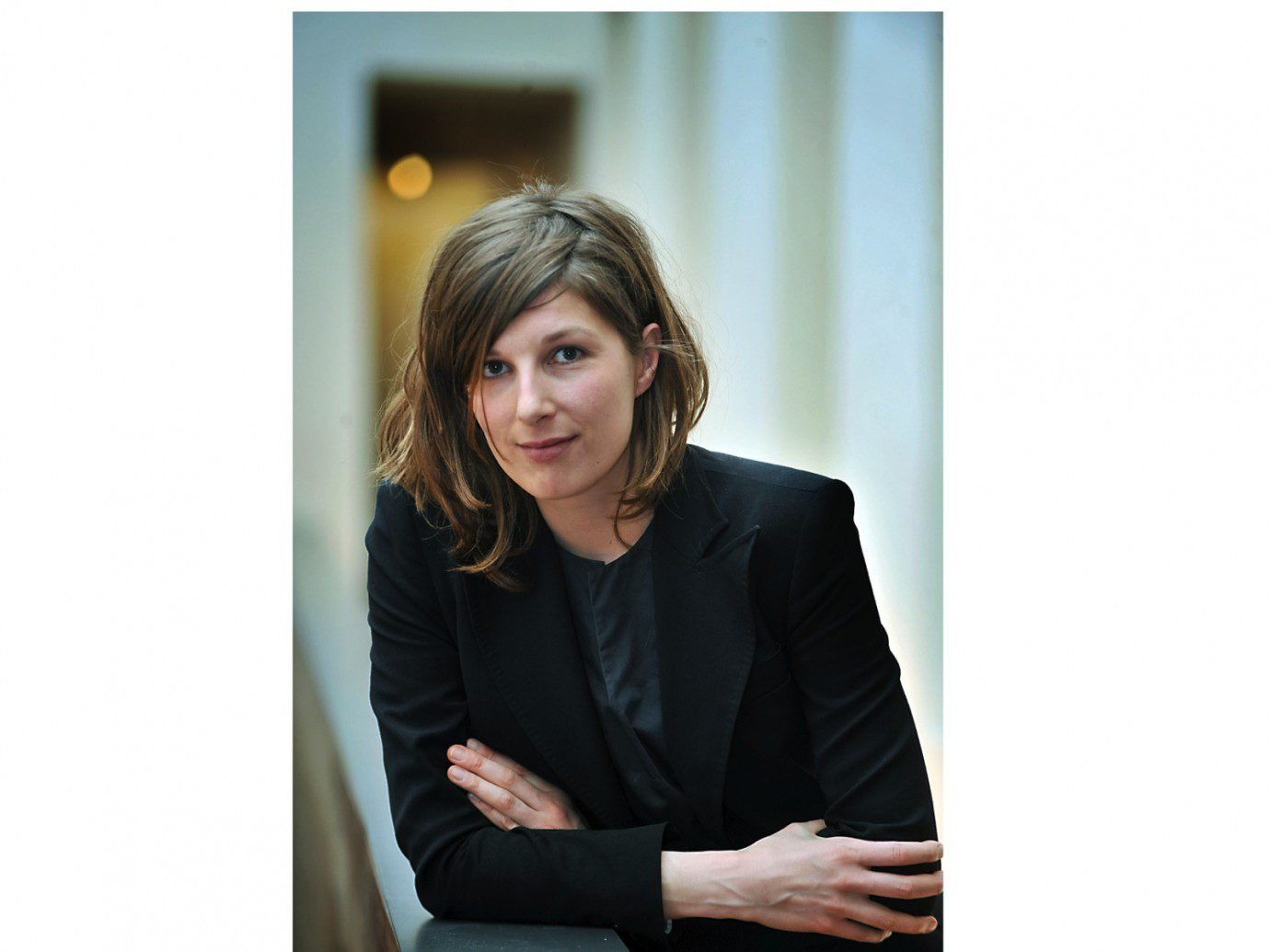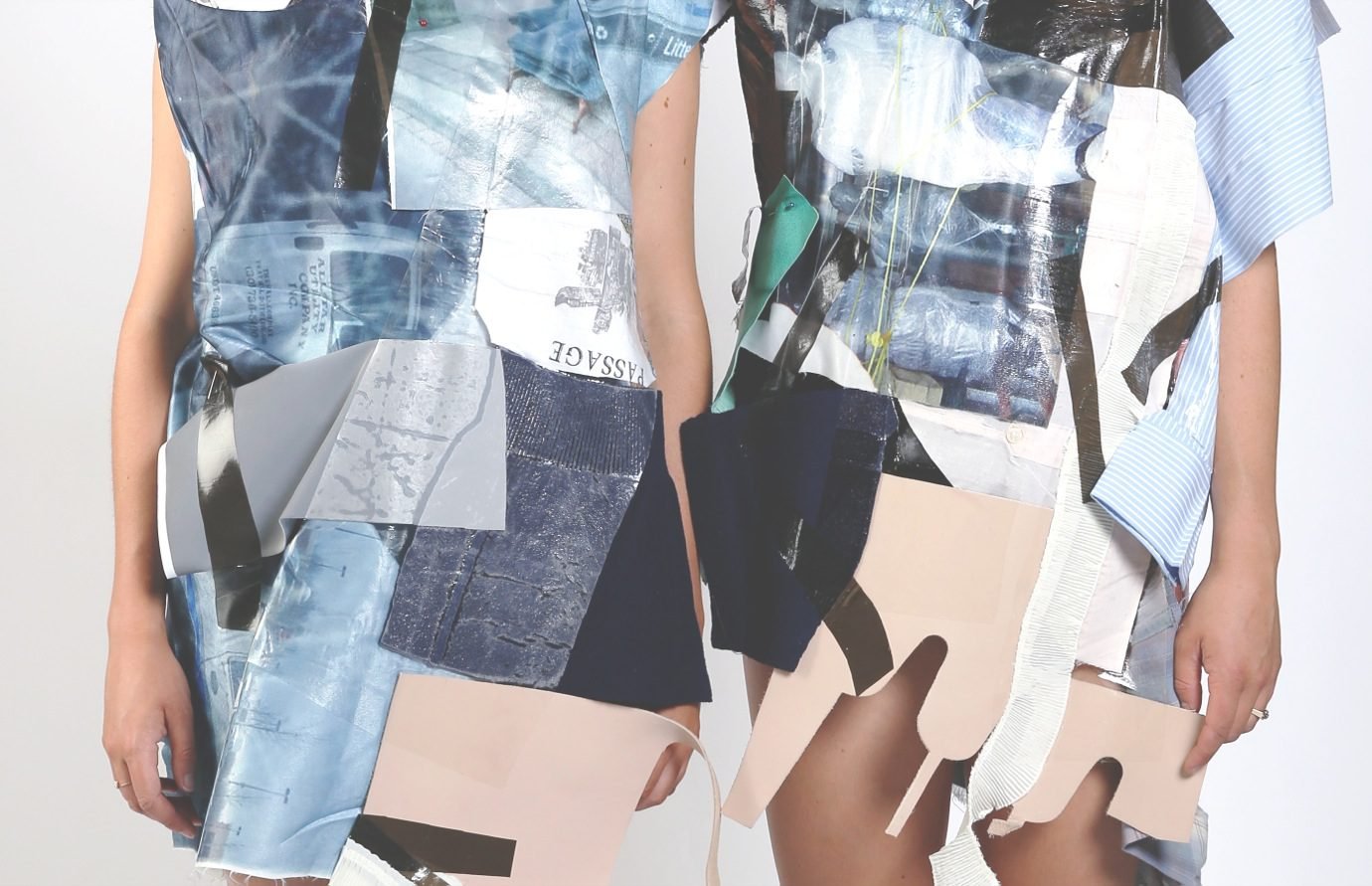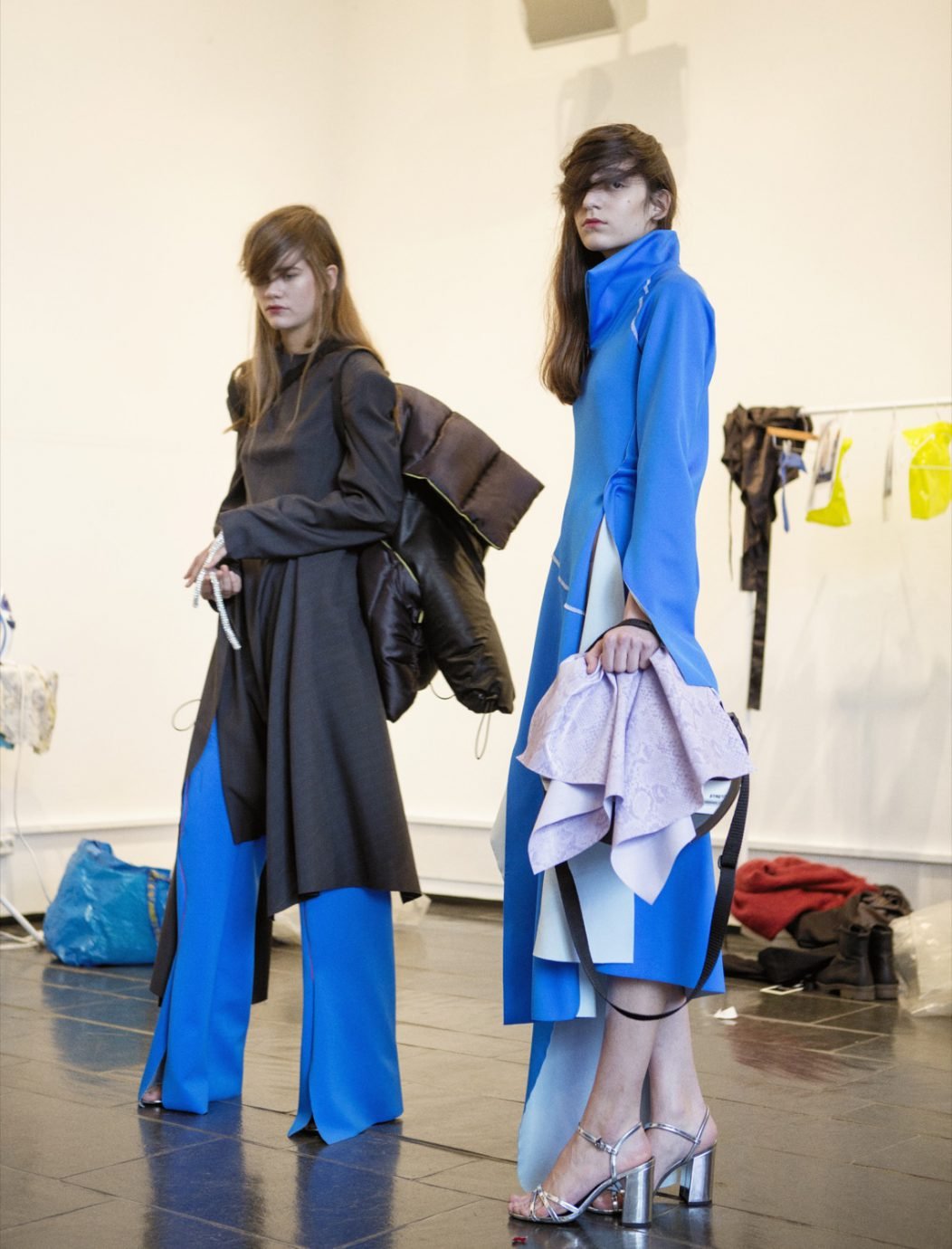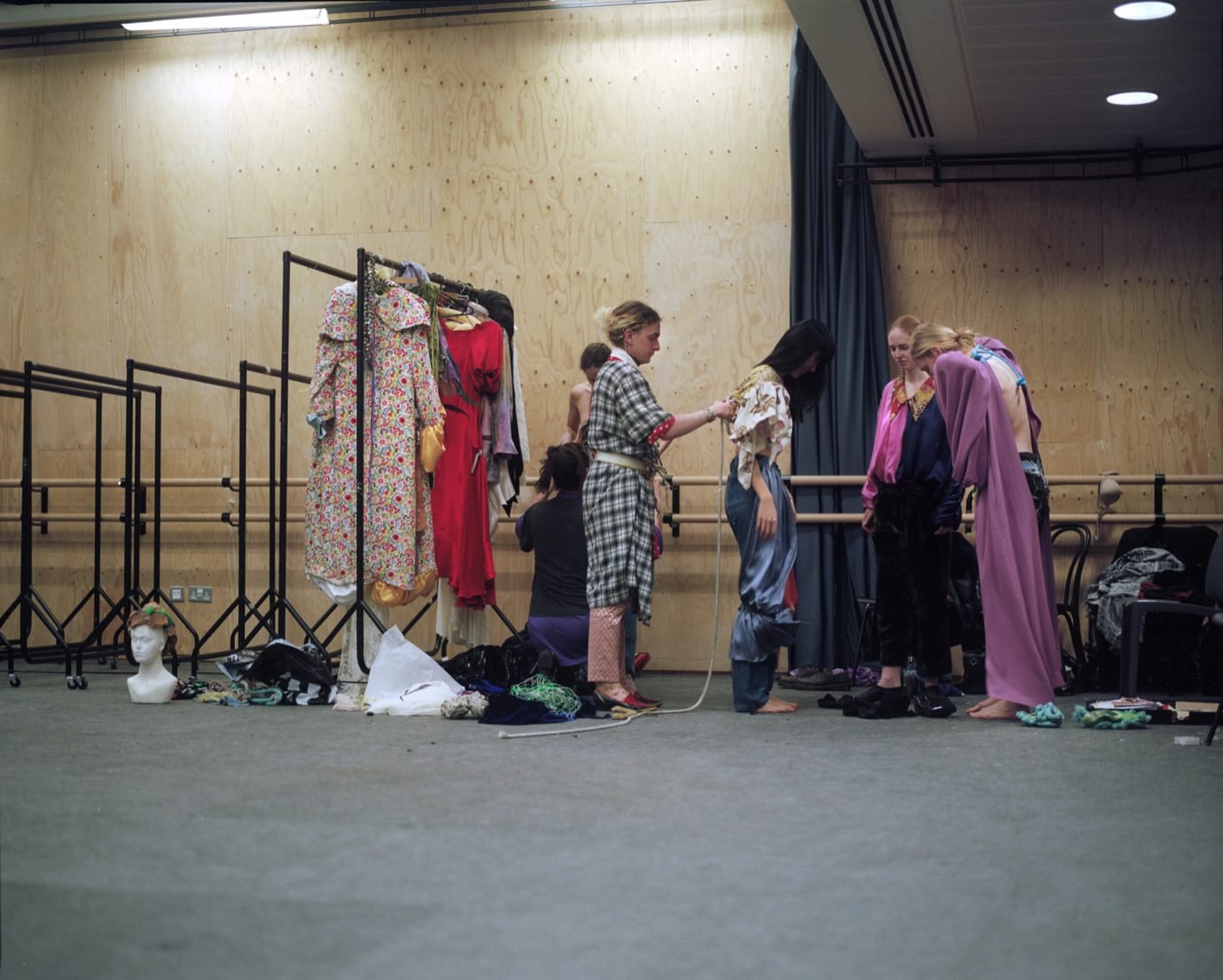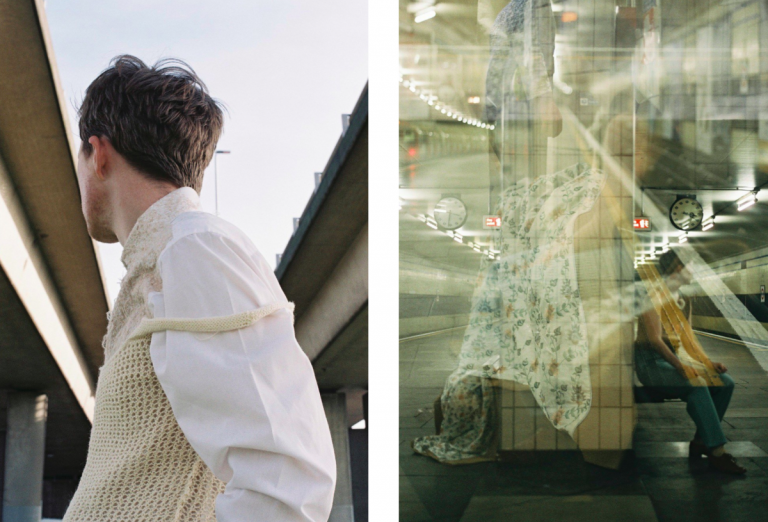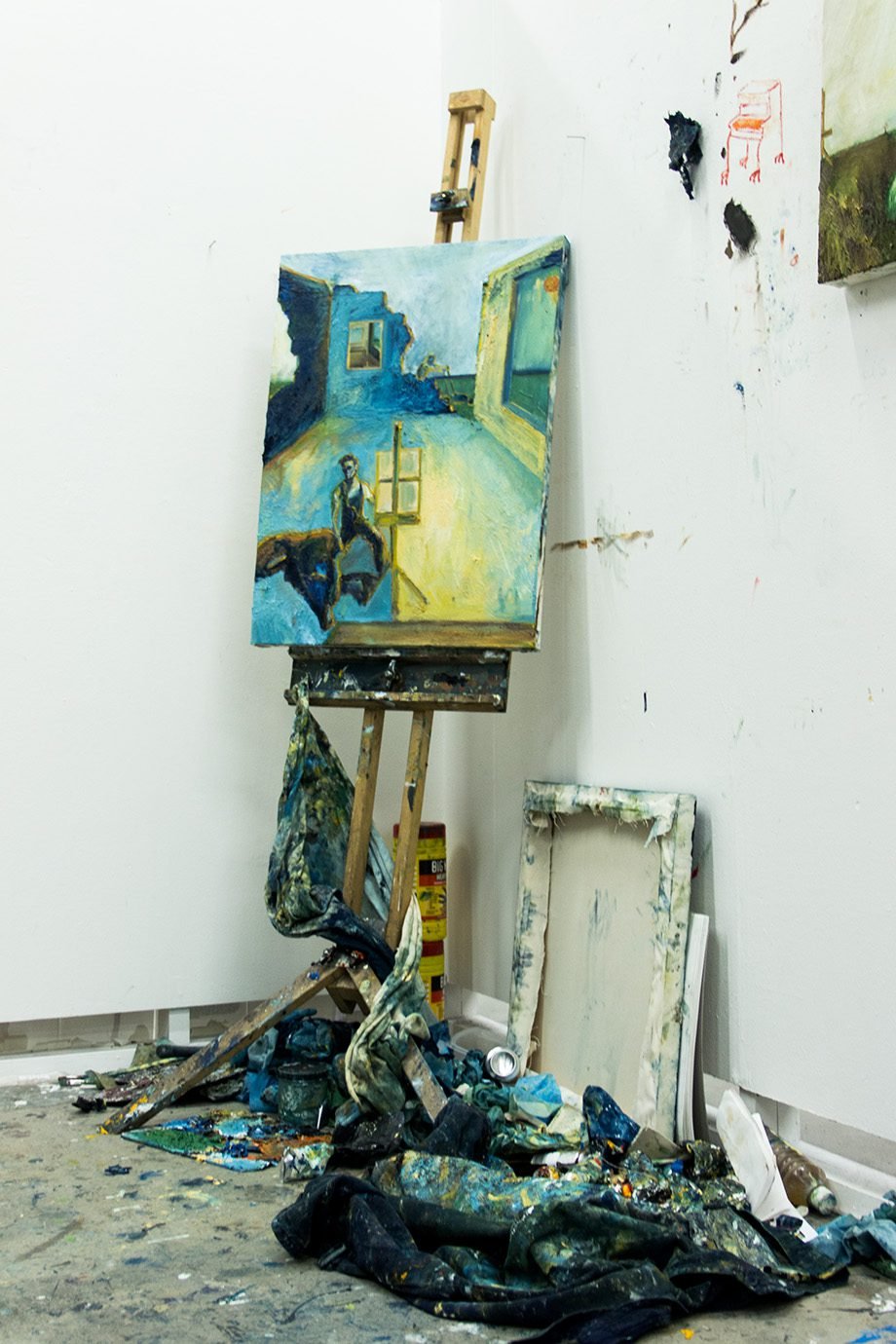It might also be hard for a young designer to judge how much they’re supposed to get out of such a relationship, and I imagine that their expectations can be very high, with thoughts like: “Oh, I hired this PR company, why is my garment not on the cover of Vogue?” And there must be a lot of mismatched expectations, fuelled by what you see in the media. It’s easy to think: “This designer graduated six months ago and now they’re everywhere, this could be me if I pay the right person!”
Well, the right person will put the right people in front of you—that’s something that you should check. After that, though, it all comes down to the material that you give them. Of course, there’s an extent to which designers really need to be there to provide images and information, to be professional, to be present; but, now more than ever, I don’t think there’s any PR that can simply harass buyers into buying, or editors into writing features. When you’re a professional in the industry, you have to treat these relationships with care—imagine going into a shop that didn’t let you step out without buying something: would you want to return? An editor or buyer feels just the same. It’s therefore important to manage expectations to some degree; you can say where you see the potential, where you think things are likely to happen. But, deep down, it always comes back to how good your last collection was and how good your most recent imagery is. But of course, the right representative will be able to bring the right people before you. If that doesn’t happen, then there’s a problem. And sometimes, what you’re offering just isn’t what the press, or buyers, are looking for that season. Very often, they’re looking for something specific.
Is this in terms of trends? Does it depend on who the ‘hottest’ designer is at the moment, and then editors and buyers go looking for something similar?
For PR, there’s a little bit of that, a bit of where the designer is coming from, where they studied and who they’re connected with. Very often, the tribe of people that support the brand is very important. For sales, I think it’s a little bit different; so much is dictated by what the customer is looking for. Are they looking for flares? Or sequins? Or streetwear? Are the streetwear kids looking for something a little more sophisticated? It’s an information-heavy process, and, naturally, when you look at a new collection, you’re computing all of that in the back of your head. It’s the same case from the PR side: personal taste aside, we do also decipher things from that point of view, we like something because we understand that it’s something being searched for at that precise moment. In any case, it’s an approach you see more of on the sales side, while the press focuses more on the design, the meaning of a collection in terms of the progression of fashion, and new offerings it brings to the table, which is difficult nowadays.
“It’s not really the press’ role to support the longevity of a designer’s career.”
You’ve mentioned, a few times now, the importance of designers producing content and imagery. It’s one of the things that designers we know struggle most with. They often feel that they already have so much to do, and that it’s not necessarily their main skill. We’ve also been thinking about how young talent is somehow perceived as entertainment: the press loves to talk about ‘the hot new thing’ and want exclusive imagery, but it’s not necessarily to the advantage of the designer.
Of course, but it’s not really the press’ role to support the longevity of a designer’s career—moreover, it’s always been like that. I do get frustrated when I see a designer that’s past their novelty seasons and is actually cementing a customer base, but the press has lost interest. But from their side, they’re asking: “What’s new?” They are, at the end of the day, there to feature news, which, by definition, is new. They need to maintain the interest of their readers with exciting new designers and new ideas. Very often, if there’s a sense of commercial consolidation, it becomes boring. It’s a frustrating element, but can the press really say: “So-and-so presented incredible streetwear with a hint of tailoring,” and then say the same thing next season? There needs to be a fresh angle to make it news. Editorial is a bit different, as it’s aesthetic—things need to match up to what that specific publication is looking to do. But news is news: with young designers, coming from nowhere, that criterion is easily fulfilled. Coming back to content, aside from strong design and brand identity, it’s the most important thing. It’s not just about the clothes, it’s about what they say, who wears them, and the entourage of people wearing the garments. And don’t forget that news can come from content! Any good PR should be able to advise on how to create news, or things that are newsworthy, that can interest editors. It doesn’t need to be a case of reinventing the wheel, but there needs to be something to say that’s not been said last season.
And how important is it, then, to be featured? Ego and prestige that come with it aside, does it really influence what a young brand’s consumers think?
It’s important to be out there, it’s important to be featured, it is. I’d probably say that it’s more important for the images to be out there, rather than to have texts written about you, unless you have a raving review from Sarah Mower, Tim Blanks, Alexander Fury, or Angelo Flaccavento. But the most important thing is that the images are out there. It doesn’t need to be a super influential platform, they just need to be out there, because having it on multiple platforms is what gets people talking. And that gives people, like buyers, confidence in a brand.
Absolutely, it’s really interesting how important the image is—it’s pretty bad news for me as a writer…
Well, not entirely… I think that with writing, if you develop your following, then you’ll have people that simply read all your work, which is why I was mentioning people like Sarah, or Tim. They make you see things that you might not necessarily have seen. This aspect of reviewing is really powerful. But it’s still critical that the images are there, that there’s multiple content, by which I mean that you have more than one set of images: one may be more lookbook-oriented, another from an installation at a store.
I always think that in fashion there are two obvious circles, one is the industry itself, including your peers. It’s very important to make sure you get approval from them.
For sure!
And then there are the people who actually buy those clothes. It’s often confusing who we’re actually talking about.
A journalist’s review is probably most effective for getting shortlisted for awards, prizes, and for gaining the respect of the industry, as well as the trust of some retailers. The majority of end-consumers, however, have less of a genuine interest in fashion, they’re more interested in images: who posted it on Instagram? Think about yourself before you really got into fashion, I’m sure you looked mainly at images, I certainly did…
Because designers are the creatives, we all want to do everything for them, and anyone who tries to touch them is considered the most evil person on the planet. I’m one of those people.
What do you mean?
Obviously, we love creativity, and we want to support designers, so whenever anyone does anything to hurt designers, we want to kill them! But at the same time, you have to understand what somebody needs in order to get the most out of that relationship. It’s really important.
One thing that really gets to me though, and I think it’s something you see a lot of in London, even though it’s one of the places with the most support and opportunities, is the complaints designers make about the most minor things. It shows a real lack of appreciation for the big picture behind it all. It’s very dangerous, I often think it happens when you’re given too much at once. You don’t really have any perspective of what reality is elsewhere, you just have a sense of entitlement. It really isn’t pretty, and it ends up demoralising the people trying to offer support. There’s obviously always room for improvement, and conversation is always positive, but it’s always a bit of a downer to hear a young, talented person complain about something they’ve been given just because they didn’t get that little bit extra. Why should the people that have already done so much do any more, when all you notice is what you haven’t received? It’s quite a prevalent culture, and I’m not sure how it can be broken.
“It’s always a bit of a downer to hear a young, talented person complain about something they’ve been given just because they didn’t get that little bit extra. Why should the people that have already done so much do any more, when all you notice is what you haven’t received? It’s quite a prevalent culture, and I’m not sure how it can be broken.”
Do you think that’s London-specific? Or perhaps to fashion in general? Or maybe expectations are too high? I think a lot of people come into the industry thinking it’s going to be fabulous…
In London, expectations are high because nobody appreciates Milan, and I don’t expect anything from New York either. But in the end, being a designer or having your own label is not a job that you’re paid to do. There’s no one out there saying, “You should be paid to design, you bring so much to the city”—I mean, you do, of course, but if you want to run your own label anywhere in the world, you need to have hundreds of thousands of pounds available, not only to do your sampling, but to have your slot on the calendar to be able to do a show. The fact that there are initiatives here that are allowing you to have that access, and then you’re complaining about the fact that the seats aren’t how you like them, for example…come on! You just had a show for free and the whole world was watching.
I used to be someone who always jumped on the ‘fund-our-designers’ bandwagon, but you dig a bit deeper and see that every organisation has its limits. I think it’s important to know that a lot of people are working like crazy behind the scenes to try to give the best they can—it’s not going to be everything, nobody can give that, not even a big luxury group can; there’s a lot you have to take care of yourself.
Most aspiring designers decide what they want to do before the age of 18. But, as you said, the reality of being a designer is that you’re an entrepreneur—not a lot of people realise what a designer’s day-to-day life is like, it’s not very glamorous.
No, it really isn’t. But most designers don’t really care about that, as long as they can continue doing what they love. Maybe there should be more information about this. I guess that designers do receive it from others that have graduated before them… it’s just really difficult, how do you brief somebody without demoralising them? And everybody’s different, so you might end up scaring somebody from doing their own thing when it actually might’ve gone really well for them.
At the same, yes, perhaps there are some elements that should be mentioned post-graduation, and I mean literally a couple of weeks after graduation, once the glitter and lashes of the show have settled. It’s a simple question of saying that if this is the path you’re going to pursue, these are the things you need to think about: Are you going to be a sole trader, or are you going to be a limited company? And what about production? Where will you be sourcing your fabric? What’s your price point going to be? What do you need to think about when shipping to different countries? These things should be mentioned to them so that they know what to look at. And then you need to explain the reality that they’re going to be broke for at least five years after graduation. But can you tell them that?
I think you can!
Well, but just because it’s the reality for 99% of people, doesn’t mean it’s the case for absolutely everyone. Perhaps that’s what should be made clear, that this is the reality for the overwhelming majority.
I think it might be similar in fashion journalism; it’s very easy, when you admire and follow certain writers, to think that it’s all about fancy dinners, drinking champagne and travelling the world… but those are just little perks you get to mask a completely broke lifestyle behind the scenes.
Yes, of course! It is very much like that. And it’s something you notice whenever somebody has an investor from outside the fashion space, they get very restless because they don’t see an immediate return on their investment. In fashion, you shouldn’t expect a return for at least five years—that’s pretty standard. There will, of course, be the rare explosion, but the first five years are always pretty tough.
“What’s quite dangerous is that, because everything is so media exposed, everyone coming out of college wants to be a big star straight away. Sometimes, the greater the hype, the greater the fall.”
Do you believe there’s still a place for independent designers?
Yes! Yes, I do. What’s quite dangerous is that, because everything is so media exposed, everyone coming out of college wants to be a big star straight away. Sometimes, the greater the hype, the greater the fall. For many, obviously, things never go to either extreme, but when you have a skyrocket exposure and hype, you also have very, very little time to figure things out, you have to take advantages of the opportunities that come your way, which in those cases are a lot. It doesn’t really allow you the time or space to lay proper foundations. I think there’s actually quite an underappreciation of slowly building a solid foundation, and then blowing up when everything is in place. There have been a few brands that have done that very successfully, they’ve kept things super small, almost unreachable until they had things figured out, and then they turned their brands into quite big success stories.
Have you ever advised a label to take a step back?
Yes, in most cases. But once you start selling and drawing in a certain level of revenue, the forecast is always going to be twenty-percent more than the previous season. In reality, you should never compare one season to the next, you should, rather, compare spring/summer with spring/summer. The same goes for autumn/winter. Sometimes, you’re just not going to hit that twenty-percent, simply because the sell-through in stores isn’t good. A lot of brands expect to have 100% growth season-on-season—in order to keep achieving that, you have to make compromises that really jeopardise the longevity of your brand. And actually, there’s nothing wrong in having a small business that grows organically, year-on-year. With the right products, at the right prices, at the right fit, it could eventually grow into quite a solid business with enough stores that really believe in the brand, because the designer really works with the stores and listens to their feedback. Sometimes ten stores can give you the same income as fifty, simply because they’re able to grow into volumes, because you’re able to offer them something that is the right fit and quality. Very often, when things are shooting off, you keep doing more and more, but you have no time to fine-tune—so many stores buy it, because they hear it’s the next hot thing, but then there’s too much product on the market, and the brand dies all of a sudden. You just can’t come back from that. There are plenty of cases of that happening. The whole cash flow is based on increasing projections, which you have to meet, and then it means that you have to say yes to five stores in the same city with a similar selection, and nobody can sell it, there’s too much of it. The supply should be lower than the demand, always. That’s the recipe for luxury and desirability! But very often, when you’re trying to keep up with this expected growth, you end up actually cannibalising the brand before you’ve even managed to establish it.
“The supply should be lower than the demand, always.”
It’s interesting because I feel like Vetements was always celebrated for that, for taking this more sustainable approach, but actually, it was just a common-sense strategy. In all of the press, you read of how it was ‘so smart’ of Guram Gvasalia to limit the supply but…
…that’s what you should do! That’s exactly what you should do, I mean that’s what Apple does! They promote a device, they have a tiny release, and there are hour-long queues outside. Or the Supreme model… I don’t think it’s necessarily that simple as a principle, but I see 95% of designers falling into the trap where they think that growth and selling more comes from selling to more stores. But it comes from going and checking what you need to do to sell more to the stores you’re already in, and taking some time to develop those relationships. Once that’s in place, then you can think about selling to more stores. What does having more stores that can’t sell mean? What does that leave you with?
Is it easy as a consultant to advise designers? Do they usually take your advice to heart?
Some will, some won’t. We obviously try to tailor our work to their needs, because they will obviously need to hire more people, and there is a certain growth that’s necessary. And the majority of the designers do listen, but we work a little bit differently to how a sales agency would typically work. So sometimes they listen, but sometimes they’ll go with someone who’ll promise them they can do three times as much, regardless of what that means in the long run.
I don’t really feel that there is a right or wrong: you don’t have to run your own brand for 10, 20 or 50 years, you can also do a really great brand, sell the shit out of it, make your money, and then go and do something else. That’s actually a very palatable prospect for a lot of people.
You mentioned the importance of awards and prizes, and it seems to me, more from a promotional aspect, that it is still really important for designers to get that recognition.
I think it’s a very powerful PR tool, no question. I mean, of course, you get the money etcetera, but it’s good exposure. It’s somebody else talking about you, not you just talking about yourself. And there will often be a panel of experts selecting the nominees, so it means that you have the endorsement of multiple experts in the field. I think it’s really good, because, unfortunate as it is, who among press and buyers has the time to go to every school graduation, every fashion week, even if they would love to? These kinds of awards tell us who’s being looked at and who finds what interesting, both from creative and business perspectives.
Who is the LVMH prize serving? Is it the 20 designers, sometimes picked when they’re still really young. Or does it just help LVMH achieve a young image?
Yes, but it has to help both, otherwise it’d be a government body! LVMH is not the Chambre Syndicale de la Haute Couture. They’re doing something which is of huge benefit to the designers, but is of benefit to their image too. In the end, it’s a business. But they invest time, not just money, in the designers, from having the people involved in the panel look at the designers’ work, to reviewing their applications. Is their image better for it? Yes! But how much are they spending, and what does the designer get out of it? I’m sure we’re talking about millions here. So, does it really matter that LVMH’s image benefits from it? If you want to remove the support, because you think LVMH shouldn’t benefit, then you’re left with nothing. Why do companies sponsor things? It’s where they choose to put their money that matters, and thank God they invest at all.
I think, for us, we’re quite young and new in the business, and we get a bit discouraged by how quickly something can go up and back down again. But you were saying how that’s not necessarily a bad thing, that it can be exciting to have something new arrive on the scene.
I mean, I do think that there should be a celebration for people who are building a signature, sticking to something and evolving and making it better. I completely agree there.
Well, what about somebody like Rick Owens: I wonder if he could still exist today, if he could build his brand from scratch, or someone like Dries Van Noten, who for decades now has been…
…but do they get a lot of press? Their shows get featured, and if they do a special retrospective or installation, they get featured. But beyond their shows, do they get much press coverage? I don’t think so! They get very little credit for how established they are, and what amazing businesses they have. You mentioned Rick; he gets given little credit for being the reason behind the fact that we’re now wearing more comfortable clothes; even from a fashion perspective, it started there. He went a bit further than fashion itself. Rick Owens became a real lifestyle brand, same with Dries, but in a different way. But they also need to produce content, so they have to do a retrospective or an exhibition, something more newsworthy outside of the show.
But we’re talking about two brands with some of the most loyal consumers on the planet, repeat customers that just buy over and over again, that’s amazing.
Do you think that’s something to strive for as a designer?
Yes, for sure. That’s real longevity. What does being established mean to you? Does it mean having all of the glory? Or all of the time you want? Very often, that doesn’t match up to what you need for a sustainable business, if you retain that glory, you might pay less attention to developing your product. Having repeat customers that come over and over again, having someone that buys a jacket every season in every variation ‒ that’s the money formula. That’s how you stay in business until you yourself decide that you don’t want to do it anymore. Though it all depends on what thrills you about being a designer.
“Having repeat customers that come over and over again, having someone that buys a jacket every season in every variation ‒ that’s the money formula.”
I’m honestly surprised that you’re so positive; there aren’t many people we interview that can speak with the same energy. I think there’s now a certain generation that entered during the golden age of designer fashion, when there was a very specific middle-class clientele. With both the growth of these luxury conglomerates and social media, it feels like there’s been a sort of power shift, where the industry is dominated by bigger brands, owned by LVMH or Kering. There appears to be less space for discovery, and less taste for something new.
Yes, but I do believe that the more you’re suffocated by something, the more things come back around. When there’s too much of something, you want something else. That’s just the way it is. Let’s be frank, in the 80s people were super logo-driven, it was about Gucci, then Tom Ford in the 90s, D&G in the 00s, etc. So that’s always been there. Perhaps one of the biggest parts of the problem is that there’s now a fast-fashion culture that wasn’t there before.
Of course, you do need to contemplate what lifestyle you’re trying to sell. A person might be into the concept, but at the end of the day it’s not art or design, it’s not a piece of furniture that you can keep in your living room for 10, 20 or 50 years. It’s still fashion, it still needs to integrate into someone’s everyday reality. Can you do a plain white tee-shirt for £1000? No, because there is Zara, there is Uniqlo and everything else. It’s not the designer’s job to do that, but there’s always going to be the need for something different, to twist the silhouette, for example. It’s not an easy road.
Adaptability is a huge thing, it travels with peoples’ age, their lifestyle, their income. And we live in the most rapidly changing times ever seen, we’re going to be dominated by AI in a minute, let’s talk about that! But it won’t be able to replicate a particular twist in a silhouette that really captures a moment, or how people are living. It’s a question of adapting to the different challenges, methods and environments of the times we live in: adaptability, being dynamic and in tune with things, is just so important. There was a bit more space and time before, but that’s now changed.
I’ve been thinking a lot about the purpose of what we do, and how working with clothes can be justified in a world where so much is going on. And I think this very basic happiness of dressing up, or looking at other people dressed up, is something so instinctive.
Yes! And look, I think fashion gets such a superficial stick, and I understand to a certain degree. Working in fashion might be more superficial than being a brain surgeon, sure, but I think it’s the most primordial form of expression. Dressing is ingrained in the human psyche. Language, as a means of expression, can be so limiting. You notice it particularly when you learn other languages, and you realise that there are certain things you can express in English, but not in your own language and vice versa.
We’re very complicated creatures, and self-expression is the thing that goes beyond words, it talks to us on another level. It’s the way you communicate something deeper, it gives people the power to be who they want to be. Before Instagram, you would bond with people because they were wearing the same thing as you. That’s what was powerful in the punk or goth communities, you have these codes that immediately bond you, purely by the way you dress: you no longer feel like a lost child.



